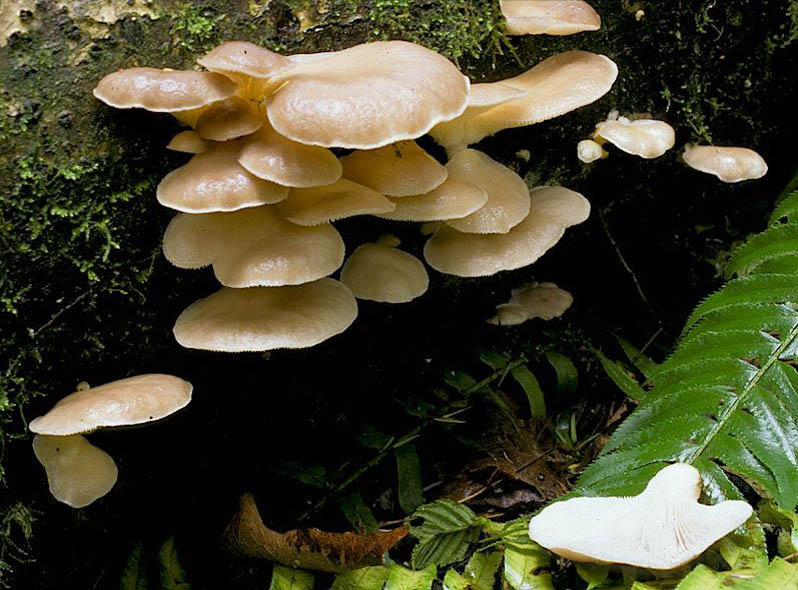
© Fred Rhoades
Danny’s DNA Discoveries – Pleurotineae "oysters" of the PNW
by Danny Miller
Click here for my Pictorial Key to all white spored "oysters".
|
|
Danny’s DNA Discoveries – Pleurotineae "oysters" of the PNW
Click here for my Pictorial Key to all white spored "oysters". |
|
Introduction
This sub-order of the Agaricales mostly consists of wood-inhabiting "oyster" shaped white spored gilled mushrooms (with a lateral or absent stem). It was thought to be relatively basal (as it contains basal forms) but one multi-gene study suggests it may be relatively crown. White spored oysters appear in other more derived sub-orders as well. My pictorial key link above covers them all. abundant common uncommon rare - colour codes match my Pictorial Key and are my opinions and probably reflect my bias of living in W WA. Rare species may be locally common in certain places at certain times. |
|
Summary of Interesting Results
Here are some of the newest, most interesting results of the study:
|
 Pleurotus (Pleurotaceae) - click to expand Pleurotus (Pleurotaceae) - click to expand
The "real" oyster mushrooms. Large, off-white caps (tan or grey), smooth gill edges, short eccentric or lateral stem, predominantly growing on hardwoods. Species in this family can trap and consume nematodes so they are carnivorous. Species mentioned: Pleurotus ostreatus, pulmonarius, populinus, dryinus. |
 Hohenbuehelia (Pleurotaceae) - click to expand Hohenbuehelia (Pleurotaceae) - click to expand
Somewhat gelatinous flesh and metuloid cystidia, but in practice hard to tell apart from other genera. Species in this family can trap and consume nematodes so they are carnivorous. Species mentioned: Hohenbuehelia angustata, cyphelliformis, mastrucata, petaloides, tremula, thornii, unguicularis, nigra. Resupinatus niger. |
 Resupinatus (Resupinataceae) - click to expand Resupinatus (Resupinataceae) - click to expand
They are very small pleurotoids (a few mm across) that are grey to black in colour usually with a completely absent stem. They are usually separated from some very similar tiny Hohenbuehelia by their lack of metuloid cystidia, although, unfortunately, one species does have metuloids and is therefore very difficult to separate from Hohenbuehelia. Species mentioned: Resupinatus applicatus, kavinae, niger, striatulus. |